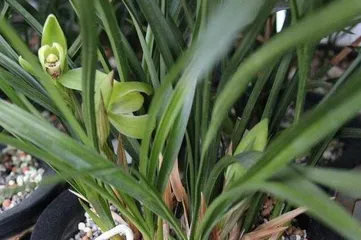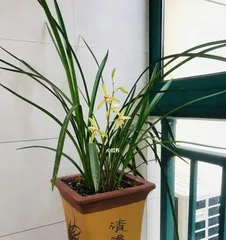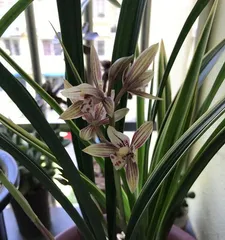Orchids are very beautiful flowers that are often loved by people in daily life. However, it is not easy to make orchids bloom year-round; we need some cultivation experience. This article will provide detailed introductions from two aspects: the blooming time of orchids and how to cultivate them.

I. The Blooming Time of Orchids
The blooming time of orchids varies depending on different varieties and growth environments, generally starting in late spring and early summer and continuing until autumn. Among them, the blooming time in spring and autumn is more concentrated, while summer has relatively fewer blooms.
II. How to Distinguish the Blooming Times of Different Varieties
For different varieties of orchids, we should understand their blooming times and suitable growth environments. For example, varieties such as Oncidium and Phalaenopsis usually start blooming in spring or autumn; while large-sized orchids and Yunnan orchids mainly bloom in autumn.

III. The Impact of Growing Environment on Orchid Blooming Time
The growing environment also affects the blooming time of orchids. Orchids grown in warm and humid environments can promote their growth and blooming. At the same time, orchids need sufficient sunlight and appropriate temperatures. If the growing environment is unsuitable, it may cause slow growth or no blooming of the orchids.
IV. Orchid Cultivation Methods
Orchid cultivation is very important and relates to their growth and blooming. Generally speaking, orchid cultivation requires attention to the following points:
V. Light
Orchids have high light requirements and need 8-10 hours of bright light per day. They can be placed in semi-shade areas, maintaining moderate sunshine duration.

VI. Temperature
Orchids prefer warm and humid environments, with an optimal growth temperature around 20°C. Generally, ventilation should be maintained in summer to prevent overheating and dryness.
VII. Water
Orchids pay great attention to water, but too much is not good. Generally, watering every 3-5 days is sufficient. Attention should be paid to keeping the soil moist but not waterlogged.
VIII. Nutrition
Orchids have high nutritional requirements and need appropriate amounts of nitrogen, phosphorus, potassium, and other elements. Special fertilizers can be used for application, once every 1-2 months.
IX. Pest and Disease Control
Orchids may also suffer from pests and diseases, such as powdery mildew and aphids. During the cultivation process, we need to detect problems promptly and take measures for prevention and control.
X. Division and Transplantation of Orchids
Division and transplantation are important steps in orchid cultivation, which can promote their growth and blooming. Generally, division and transplantation are more suitable in spring or autumn.
XI. Flowering Period and Cycle of Orchids
The flowering period and cycle of orchids vary depending on variety and growing environment. Generally, the flowering cycle of the same variety of orchids is relatively fixed, such as the one-year flowering cycle of phalaenopsis. However, under different growing conditions, the flowering cycle may also change.
XII. Methods to Extend Orchid Flowering Period
If we want to extend the flowering period of orchids, we can make appropriate adjustments to fertilization and watering, and control indoor temperature and humidity to promote orchid growth and blooming.
XIII. Preservation and Display of Orchids
During the blooming period of orchids, we also need to pay attention to their preservation and display. They can be placed in well-ventilated positions indoors, avoiding direct exposure to excessive sunlight and rain.
XIV. Appreciation Value of Orchids
Orchids are very beautiful flowers with wide application values in garden landscapes, bonsai, and indoor decoration. At the same time, they have high ornamental value, allowing us to appreciate the beauty of nature.
XV.
In the process of cultivating orchids, we need to pay attention to regulating light, temperature, water, nutrition, and other aspects, and timely prevent and control pests and diseases. At the same time, for different varieties and growing environments, we need to understand their blooming times and cycles, and perform appropriate division and transplantation. Only in this way can we make orchids bloom year-round and showcase their beauty and charm.
<|end_of_box|>